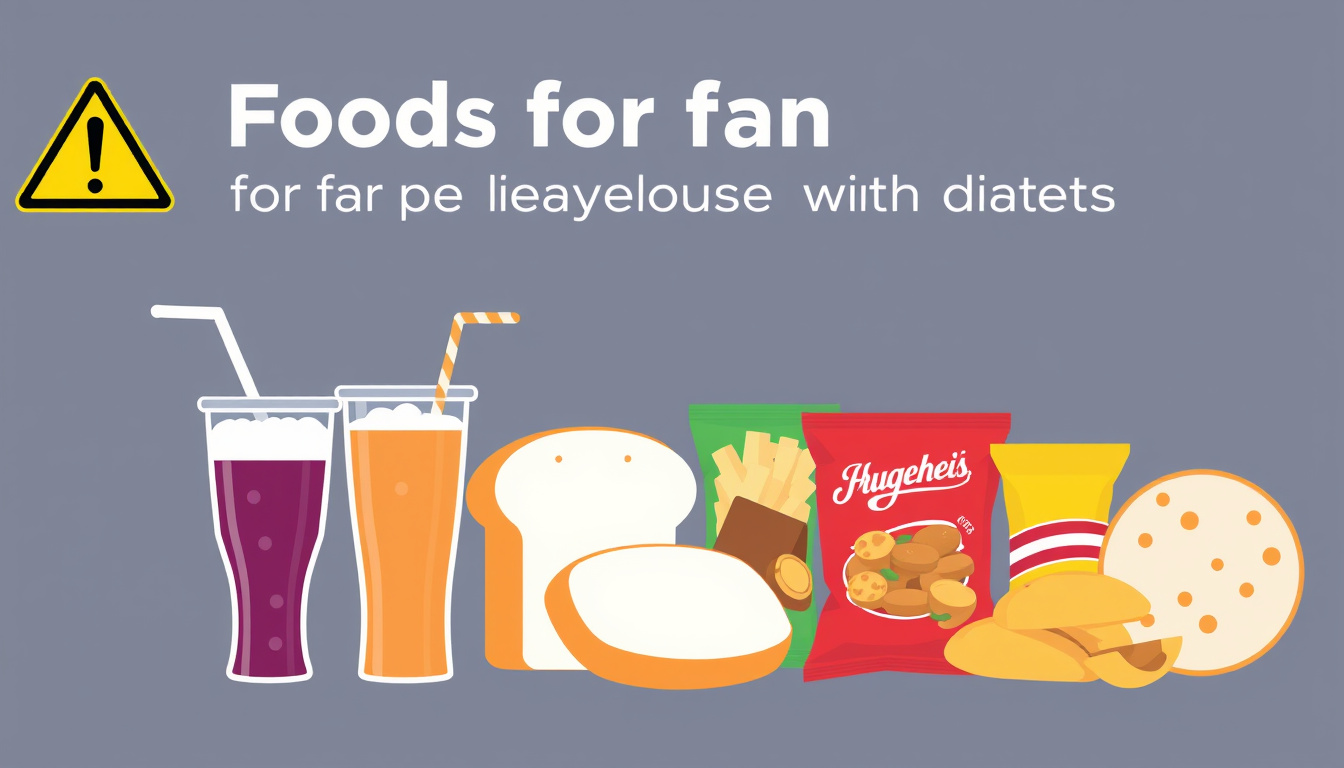Navigating Diabetes: The Most Dangerous Foods to Avoid – Your Essential Q&A Guide
 Jill Smith
Jill Smith
Managing diabetes effectively requires careful attention to lifestyle choices, especially when it comes to diet. Understanding which foods to avoid can make a substantial difference in controlling blood sugar levels and preventing complications. Here, we break down key insights from a rapid-fire Q&A session with Dr. Ergen to help you identify the most dangerous foods for diabetics and provide essential tips for managing blood sugar.
Early Signs to Watch Out For: Insulin Resistance vs. Diabetes
Before diving into foods, it’s important to recognize early signs of insulin resistance—the precursor to type 2 diabetes. Symptoms include:
- Increased hunger and strong cravings for sugary foods
- Fatigue, especially after meals, such as an afternoon energy slump
- Weight gain around the abdomen without changes in diet or exercise
- Darkened patches of skin, known as acanthosis nigricans, often found behind the neck, under the armpits, or in the groin area
Identifying these symptoms early can guide timely lifestyle interventions that may prevent progression to full-blown diabetes.
The Most Dangerous Foods for Diabetics to Avoid
Certain foods significantly impact blood sugar and insulin regulation, particularly:
1. Commercial Desserts and Bakery Products
These are often loaded with refined sugars and unhealthy fats, causing rapid blood sugar spikes.
2. Sodas and Fruit Juices
Despite being liquids, they contain high amounts of sugar with little to no fiber, leading to quick absorption and elevated glucose levels.
3. Refined Carbohydrates: White Rice and Pasta
Simple carbs break down quickly into glucose, causing blood sugar to surge shortly after meals.
4. Commercial Sauces and Condiments
These often hide added sugars and unhealthy preservatives that can worsen blood sugar control.
Avoiding or minimizing these foods can help reduce the frequency and severity of blood sugar spikes after eating.
Managing Blood Sugar Spikes After Meals
Dr. Ergen suggests practical strategies such as:
- Eating high-fiber foods like salads or soups before the main meal
- Taking a walk before and after eating to improve glucose utilization
- Including supplements like berberine to support blood sugar regulation (always consult your healthcare provider before starting supplements)
These steps help slow down glucose absorption and promote better blood sugar management.
Monitoring Blood Sugar: How Often and When?
Consistent monitoring is vital. If you have access to a Continuous Glucose Monitor (CGM), you can check levels frequently. Otherwise, key testing times include:
- 2 hours after waking up to check for dawn phenomenon (early morning blood sugar rise)
- 2 hours after meals to observe postprandial spikes
- Before bedtime to ensure levels are stable overnight
Frequent monitoring provides timely insights to make necessary adjustments in diet, exercise, or medication.
The Impact of Stress on Blood Sugar
Stress triggers the release of cortisol and adrenaline, hormones that raise blood sugar by mimicking steroid medication effects. It also often leads to cravings for comfort foods, compounding the problem. Managing stress through mindfulness, exercise, or other relaxation techniques is essential to prevent dangerous glucose fluctuations.
Exercise and Diabetes Management
Regular exercise helps improve insulin sensitivity. Recommended guidelines include:
- 150 minutes of moderate-intensity aerobic activity per week (you should be able to talk but feel your heart rate elevated)
- Alternatively, 90 minutes of high-intensity exercise if appropriate (where speaking is difficult due to heavy breathing)
- Ensure continuous activity that raises your heart rate for sustained periods of 15 to 30 minutes, every day or every other day
Exercise not only controls blood sugar but also enhances overall health.
Recognizing High vs. Low Blood Sugar Episodes
Low blood sugar (hypoglycemia) symptoms are quite distinct and include sweating, dizziness, nervousness, rapid heartbeat, and anxiety. High blood sugar symptoms are more varied, often including blurred vision, tiredness, and frequent urination.
What to Do in Case of Low Blood Sugar
- Stop exercising immediately
- Consume fast-acting carbohydrates such as 4 ounces of juice, glucose tablets, or a few crackers to quickly raise blood sugar
- Avoid overconsumption to prevent rebound hyperglycemia
- Don’t rely solely on CGM readings during lows, as they can be delayed by up to 30 minutes, potentially misleading you to eat more than necessary
Monitoring A1C Levels and Target Range
HbA1C reflects average blood sugar over 3 months and is typically checked quarterly. For quicker feedback on recent changes, some tests can detect improvements within a month, but the full effect is seen over longer periods.
- Younger, early-stage diabetics should aim for A1C under 6% (preferably in the 5s)
- Older adults or those on multiple medications may have safer targets between 7% and 8% to reduce the risk of hypoglycemia and side effects
Final Thoughts
Avoiding high-sugar, highly processed foods such as sugary desserts, sodas, refined pasta, and commercial condiments is crucial in managing diabetes. Pair this awareness with regular monitoring, stress management, and consistent exercise to maintain balanced blood sugar levels. Always work with your healthcare team to tailor your diabetes management plan to your individual needs.
By navigating these dietary pitfalls and adopting holistic lifestyle changes early on, you can take control of your diabetes and significantly improve your quality of life.
Turn Back the Clock: Unlock the Secrets to Reverse Diabetes in 30 Days. Don't Wait! Download Now
Subscribe to my newsletter
Read articles from Jill Smith directly inside your inbox. Subscribe to the newsletter, and don't miss out.
Written by
